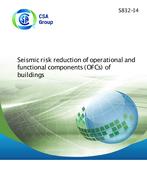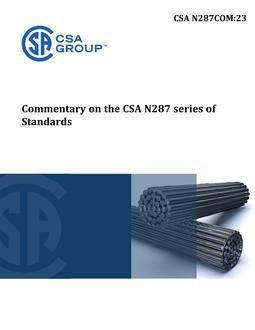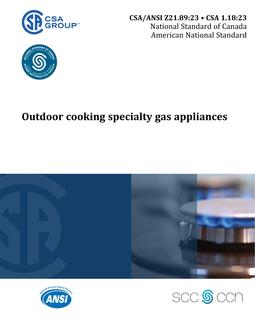
CSA S832-14 (R2019)
- Comments Off on CSA S832-14 (R2019)
- CSA
Click here to purchase
Scope
1.1 General
1.1.1
This Standard applies to OFCs in buildings with seismic hazards as defined in Article 4.1.8.1 of the NBCC.
1.1.2
This Standard provides information and methodologies to identify and evaluate seismic hazards associated with OFCs and to undertake appropriate mitigation strategies and techniques. While seismic risk reduction of OFCs is affected by the structural performance of a building, this Standard does not address structural integrity (see Clause 1.3.1).
1.1.3
This Standard is intended for use by building owners, building officials, facility managers, engineers, architects, and other stakeholders for improving the safety and serviceability of OFCs subjected to earthquakes.
1.2 Application
1.2.1
This Standard identifies types of OFCs, their failure modes and consequences, and design/retrofit approaches. This Standard applies to new and existing buildings (including renovations), and to major occupancy classifications listed in Appendix A of the NBCC Groups A to F (namely: assembly, care or detention, industrial, residential, business and personal services, and mercantile), and post-disaster buildings.
Note: Lifeline components in the immediate vicinity of the building and essential to its performance objective (such as transformers, back-up power generators, fuel tanks, elevators, etc.) are considered to be part of the building in the application of the Standard (see Clause 1.3.2) .
1.2.2
Special use of buildings, hazardous materials storage, and building contents and processes requiring special protective measures can require additional considerations beyond the scope of this Standard.
Note: Examples include emergency response facilities, electric power systems, telecommunication systems, water supply, wastewater collection and treatment systems, hospitals and nursing homes, large assembly occupancies, industrial risk-generating facilities, laboratories and hazardous materials, art galleries and museums, and correctional institutions (see Annex G) .
1.2.3
Additional considerations for heritage buildings are stipulated by various heritage authorities (see Annex G).
1.3 Exclusions and limitations
1.3.1
This Standard does not address the integrity of the structural systems of buildings. Structural aspects are covered by the building codes and other publications referenced in Clause 2.
1.3.2
This Standard does not address the integrity of lifeline systems (essential utility services systems such as telecommunications, electricity, water supply, wastewater collection and treatment, natural gas, etc.) that feed the building from the outside or underground. These systems require special interfacing design and details at the building junction to allow for differential movements between the building and its surrounding environment. It is important that building owners, building designers, utility designers, and geotechnical experts coordinate the interface design and details.
1.3.3
This Standard does not explicitly address the intrinsic functionality assessment of OFCs and/or their integral components either during or after an earthquake. Depending on the OFC performance objective, this assessment might be necessary but lies outside the scope of this Standard and might require complex engineering analysis and/or seismic qualification testing. However, the application of this Standard can result in continued functionality and operation for certain OFCs, depending on the intensity of shaking and the level of over-design introduced in the mitigation scheme.
Note: Intrinsic functionality issues refer to the functionality of those OFCs that would be adversely affected by the malfunction of one or more elements damaged by the design earthquake. Most complex OFCs (containing electronic parts, for example) that are used in high seismic areas are designed and built with internal seismic isolation and subjected to seismic qualification testing. Systems comprising several OFCs (especially those involving fluid or gas flow) require careful assessment of interconnections. Due consideration shall be given to internally fragile OFCs equipped with stop anchors or snubbers (comprising air gaps) as large shock accelerations may be induced if the OFC impacts on its supports during strong shaking [see Clause 9.4.1 e)] .
1.4 Terminology
In this Standard, “shall” is used to express a requirement, i.e., a provision that the user is obliged to satisfy in order to comply with the standard; “should” is used to express a recommendation or that which is advised but not required; and “may” is used to express an option or that which is permissible within the limits of the standard. Notes accompanying clauses do not include requirements or alternative requirements; the purpose of a note accompanying a clause is to separate from the text explanatory or informative material. Notes to tables and figures are considered part of the table or figure and may be written as requirements. Annexes are designated normative (mandatory) or informative (non-mandatory) to define their application.
Product Details
- Edition:
- 3rd
- Published:
- 06/01/2014
- ISBN(s):
- 9781771394529
- Number of Pages:
- 133
- File Size:
- 1 file , 1.9 MB
- Product Code(s):
- 2422867, 2423399, 2422867, 2422867



